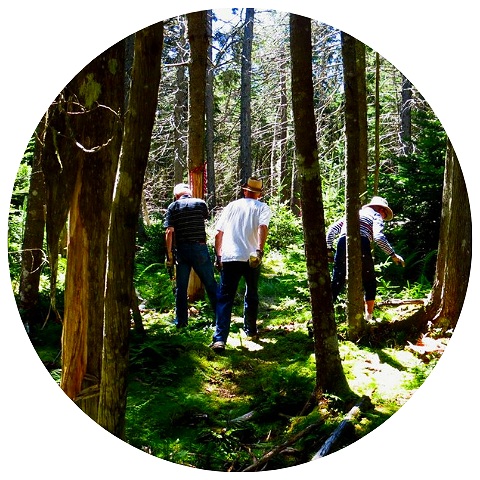Overview
Boars Head Nature Preserve consists of 27 hectares (65 acres) of land along the shore of the Kennebecasis Bay near its confluence with the Wolastoq (Saint John) River, in the Millidgeville area of the city of Saint John. It is one of the last natural areas in a fast-developing community. This nature preserve provides a sanctuary of scenic beauty, recreational opportunity, and wildlife habitat.
History
The nature preserve has been used for hunting in the past. The Girl Guides have also used the property for camping, nearly 50 years ago. Another name for this area is “The Farms” since the Bullock family walked their cattle down a trail and into the nearby fields. In addition, the Snowflake Lime Company used to mine the 30 ft buffer zone of the preserve, which is now owned by the City of Saint John.
The area that is now the Boars Head Nature Preserve was being considered for residential development in the 2000’s. However, due to the rapid reduction of undeveloped coastline in the area, many environmental groups and citizens preferred to have this land conserved. The Province of New Brunswick transferred ownership of this area to the Nature Trust in 2010.
Ecology
This preserve showcases over 150 meters of pristine shoreline along the Wolastoq (Saint John) River Basin. The preserve contains red spruce groves, and cedar and alder wetlands, and is home to the very rare (S2) Anticosti Aster (Symphyotrichum anticostense) and the extremely rare (S1) maidenhair spleenwort (Asplenium trichomanes).
Access and Activities
Parking is available on Ragged Point Road or at the École Samuel-de-Champlain. From the parking lot, walk approximately 300 m on the Ragged Point Road until you reach the trail entrance. Proceed with caution and use proper guidance equipment. The trails in this preserve are 1.7 km long.
*The property is undeveloped and there are a variety of hazards and risks associated with accessing this preserve. While this nature preserve is open for public access, visitors must assume responsibility for their own actions and safety and are to use the land at their own risk.


